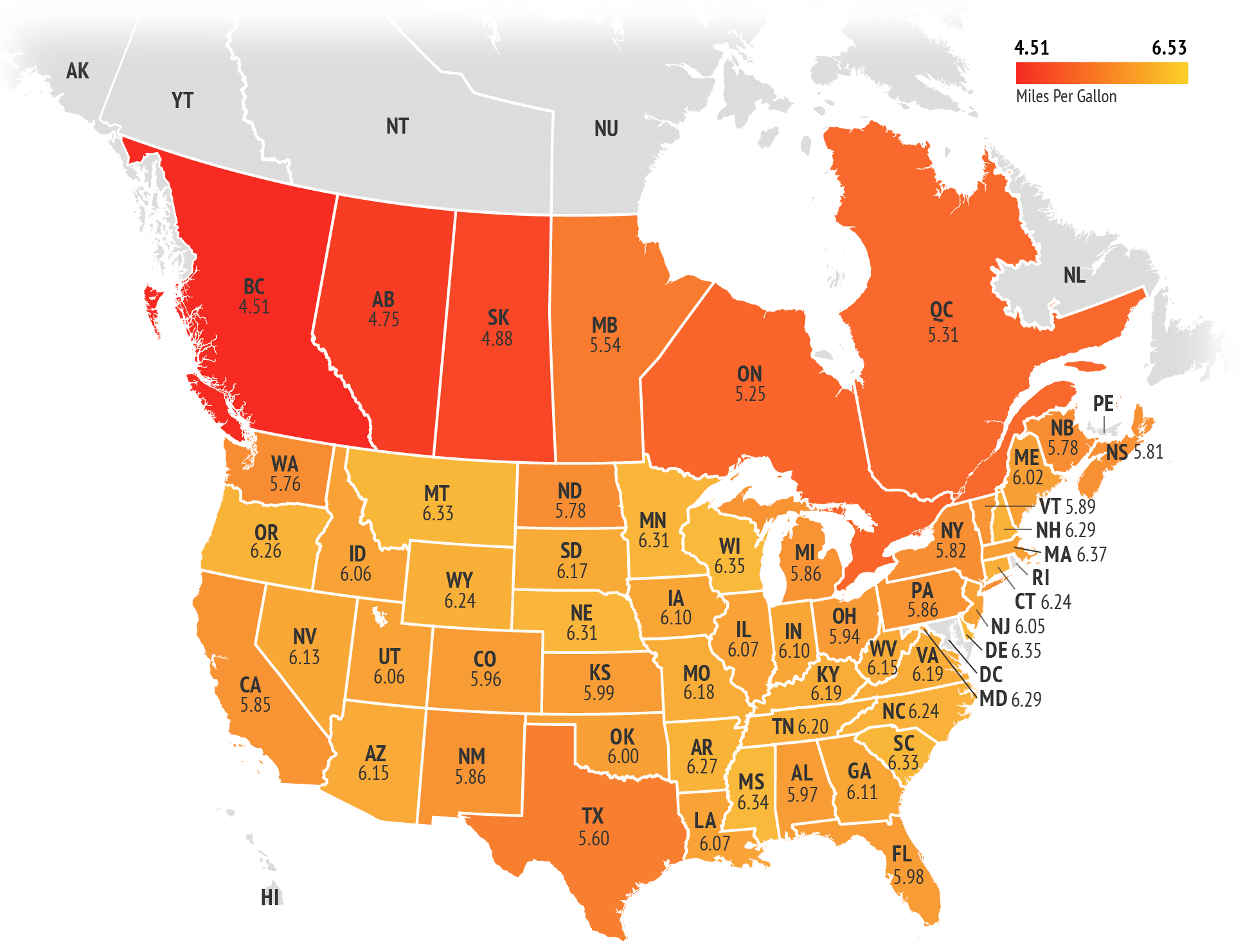
A quick look at any truck stop’s signage this year will reveal some eye-popping numbers; U.S. Energy Information Administration (EIA) figures for March 2022 peg the average cost of gasoline at $4.22/gallon. Diesel fuel comes in almost a full dollar higher at $5.11/gallon. Price pressure has abated since then, but only slightly. According to the American Automobile Association (AAA), the average gallon of gas in America at the time of this writing is $4.12/gallon.
The countless factors that influence that price – geopolitical conflicts, domestic and foreign production capability, government regulations, logistical expenses, etc. – are frustratingly beyond the control of most transportation companies. However, there are several things that can be done to improve fuel efficiency and stretch those expensive gallons as far as possible:
- Automated Manual Transmissions: Testing shows that AMT-equipped fleets see a 1-3% improvement in fuel efficiency.
- Low Rolling Resistance Tires: Rolling resistance is responsible for about a third of the fuel cost of a modern class 8 truck. The Environmental Protection Agency’s SmartWay program, an initiative aimed at improving supply chain sustainability, publishes a list of over 300 verified LRR tires that can be found here.
- Trailer Aerodynamics: Van drivers can add trailer skirts and rear wings, relatively inexpensive additions that can result in up to a 5% improvement in fuel economy. Flatbed drivers should take care to keep their load height as short as possible to minimize wind resistance.
- Proper Tire Inflation: For every 1 psi drop in pressure that your tires have, your under-inflated tires can lower your gas mileage by 0.3%. Properly inflating your tires will also extend their lifespan, reducing another common expense fleets have to contend with.
- Driver Best Practices: The human element of fuel efficiency should never be discounted. Drivers can do their part to reduce fuel consumption by staying in a higher gear for highway miles, shifting gears between 1150 and 1500 rpm, using momentum in lieu of the gas and brake pedals when the terrain allows, and keeping their speed below 55 mph when feasible (each 1 mph increase reduces fuel efficiency by 0.1 mpg).
Guttman Energy’s Fleet Fuel Card is the perfect tool to stretch your fuel budget further. In addition to the instant savings available at our network sites, our detailed Fleet Management Reports use your odometer readings to calculate the exact fuel efficiency of every vehicle in your fleet, allowing you to identify what equipment stands to benefit the most from the options outlined in this article. Contact us today to see how we can help!
Sources:
Manage Your Semi-Truck’s Fuel Use with These Tips



